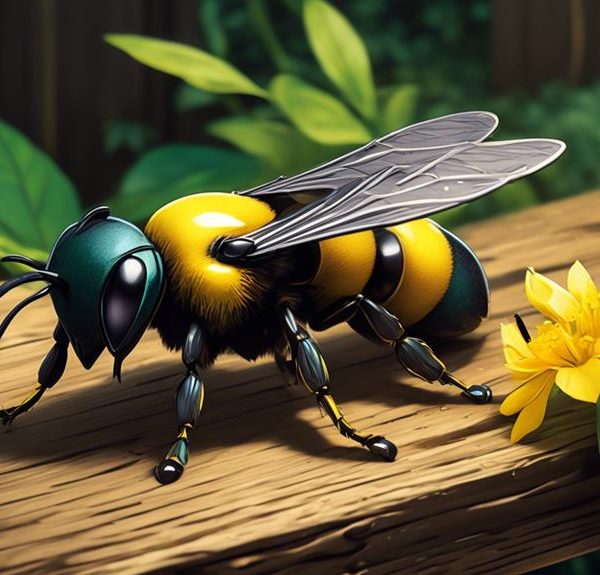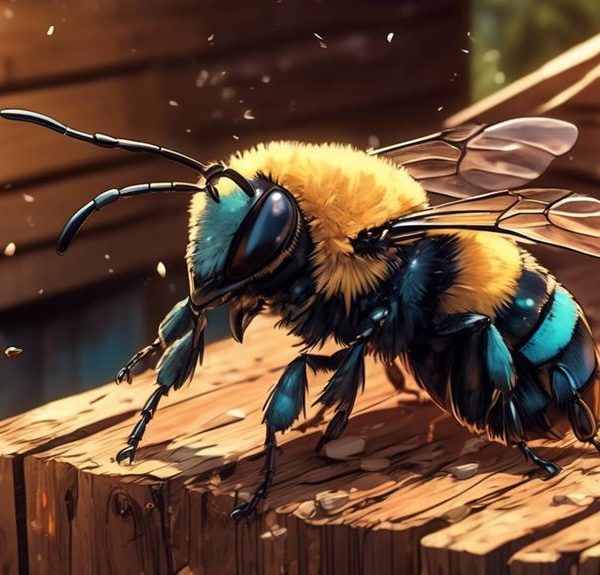Keep your shed safe from carpenter bees; learn how to identify, manage, and prevent these wood-boring pests from causing damage.
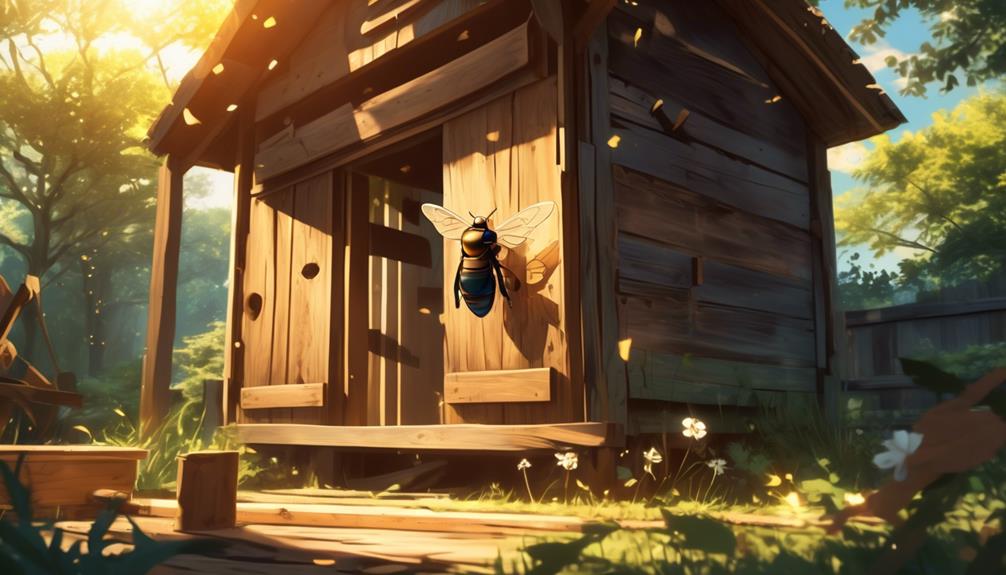
Carpenter Bees in Shed
Imagine yourself in the tranquility of your garden shed, the faint scent of sawdust in the air, when the peaceful stillness is interrupted by a low, persistent buzz.
You've discovered a carpenter bee infestation, the culprits behind the small, perfectly drilled holes in the wooden structure of your shed. Carpenter bees, while not as destructive as termites, can cause significant damage over time if left unchecked.
As a homeowner, you're left wondering how to identify, manage, and possibly prevent these industrious insects from turning your shed into their own personal woodshop.
There's a lot to uncover about these wood-boring bees, and knowing how to handle them can make all the difference.
Key Takeaways
- Carpenter bees are solitary creatures that bore into wood to create nests for their offspring.
- Signs of carpenter bee infestations include round, smooth holes in wooden structures, sawdust or 'frass' beneath the holes, and bee stains or fecal matter around the nest entrance.
- Carpenter bee damage can compromise the structural integrity of the shed, weaken wood with an extensive network of tunnels, attract other wood-boring insects, and cause damage from larvae in sealed cells.
- Effective removal techniques for carpenter bees include using residual insecticide dust, using carpenter bee traps, physically removing bees by plugging tunnels with steel wool, and choosing the method based on severity, budget, and preferences.
Understanding Carpenter Bees
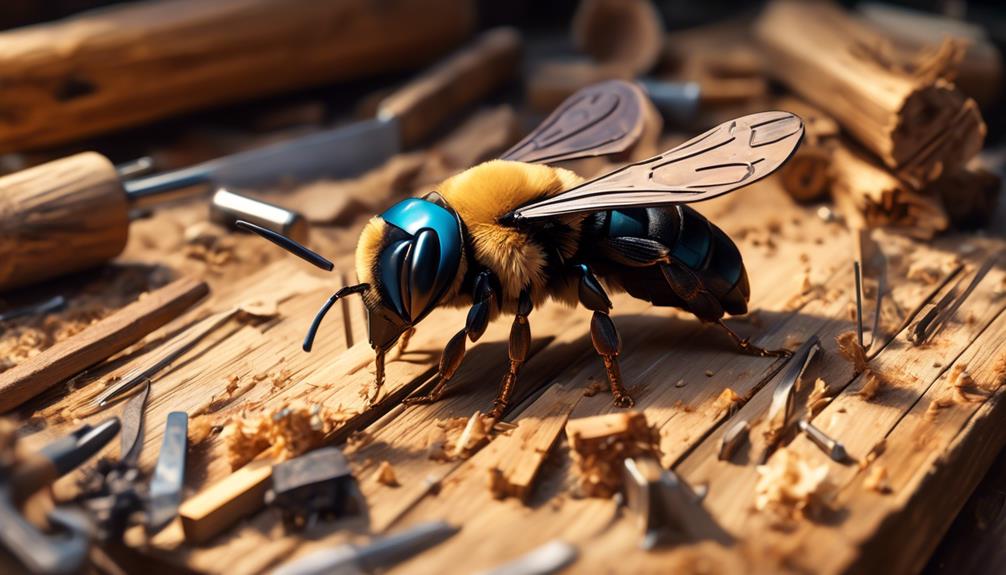
To truly combat carpenter bees in your shed, it's crucial to understand their behavior, life cycle, and the distinctive signs of their presence.
Unlike honeybees or bumblebees, carpenter bees are solitary creatures. They bore into wood to create nests for their offspring, leaving perfectly round, half-inch holes. You'll often see sawdust beneath these holes, a clear sign of their activity.
Understanding their life cycle can help your efforts to control them. After mating in spring, female carpenter bees excavate new tunnels or enlarge old ones to lay their eggs. They then seal the tunnels with a mixture of chewed wood and saliva, creating individual cells for each egg. The eggs hatch in late summer, and the young bees will stay in their nests over winter, emerging in spring to start the cycle all over again.
If you notice a sudden increase in large, black bees around your shed, coupled with the telltale signs of wood damage, you're likely dealing with a carpenter bee infestation. Remember, these bees prefer untreated, unpainted wood, so regular maintenance can go a long way in preventing their presence.
Identifying Carpenter Bee Infestations
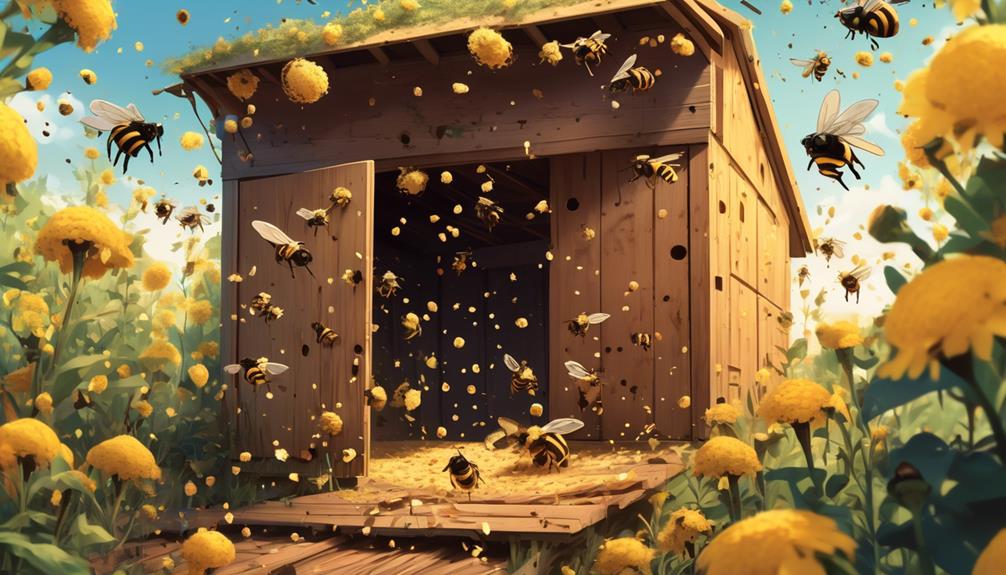
Spotting a carpenter bee infestation in your shed requires a keen eye for distinctive signs of their activity and damage. The first sign you'll likely notice is the presence of round, smooth holes in wooden structures. These holes, typically about half an inch in diameter, are the entrances to the bees' nests.
You might also find sawdust or 'frass' beneath these holes, a byproduct of the bees' burrowing. Another telltale sign is the presence of bee 'stains', or fecal matter, around the nest entrance.
To help you remember these signs, refer to the following table:
Signs | Description | Appearance |
|---|---|---|
Holes | Round, smooth entrances to nests | Half an inch in diameter |
Sawdust or Frass | Byproduct of bees' burrowing | Yellowish, powdery |
Stains | Fecal matter of bees | Dark, irregular spots |
Lastly, you might spot adult bees hovering around your shed, particularly in spring when they're most active. However, carpenter bees are solitary creatures, so don't expect to see a swarm. If you notice these signs, it's time to take action against the infestation.
Damage Caused by Carpenter Bees
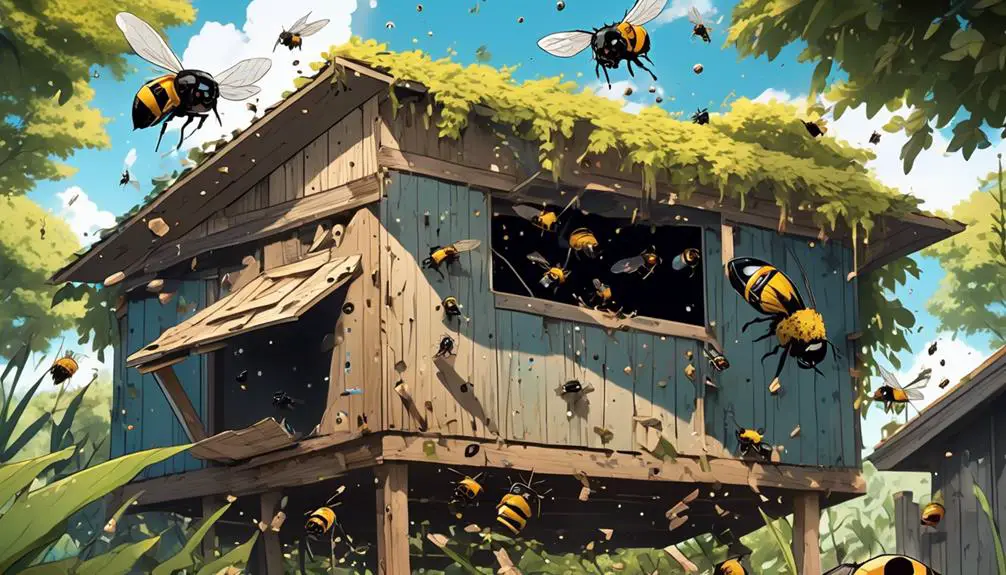
Often underestimated, the damage caused by carpenter bees can be significant and costly, particularly if their infestation goes unnoticed or untreated. These creatures bore into wood, creating tunnels as they go. Over time, these tunnels can compromise the structural integrity of your shed, leading to costly repairs or even replacement.
Unlike termites, carpenter bees don't consume wood, but their tunneling activity can still cause substantial damage. They'll often return to the same site year after year, leading to an extensive network of tunnels that can weaken wood even further. Moreover, the sawdust they produce during their excavations can attract other wood-boring insects, exacerbating the problem.
The females lay their eggs in these tunnels, sealing them off with a pulp made from chewed wood and saliva. The larvae then develop in these sealed cells, further damaging the wood. And let's not forget the staining that can occur from their droppings, which can mar the appearance of your shed.
Effective Carpenter Bee Removal Techniques
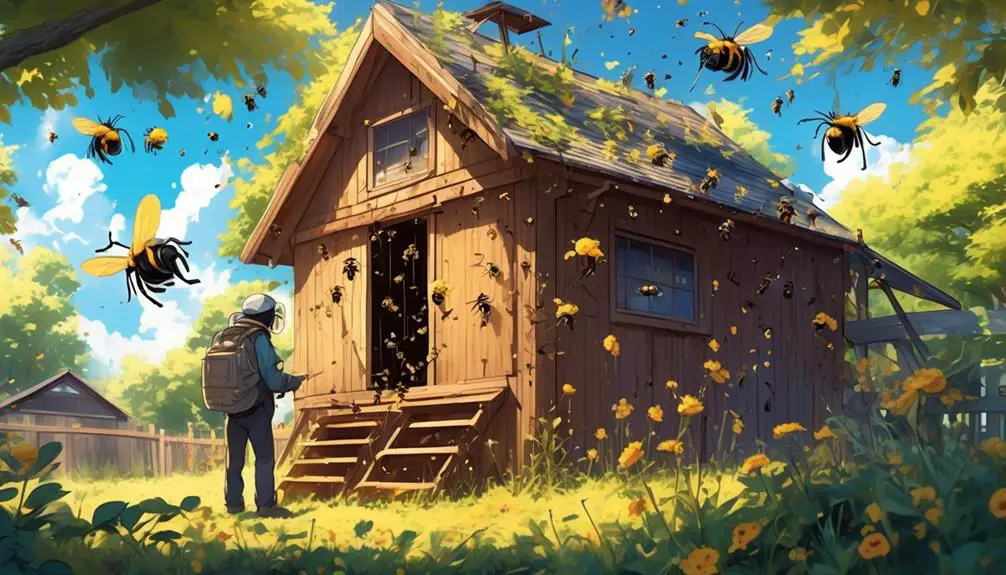
After identifying an infestation, it's crucial to promptly implement effective carpenter bee removal techniques to prevent further damage to your shed. There are several scientifically endorsed methods you can employ.
The first method involves using a residual insecticide dust, such as those containing boric acid. You'll need to inject this dust directly into the bee tunnels, which won't only kill the bees but also deter future infestations. For this, you'll need a duster tool to ensure deep penetration of the insecticide.
Alternatively, you can use a carpenter bee trap. These traps mimic the bees' natural nesting tunnels, attracting them into a one-way entrance from which they can't escape. However, remember that this method doesn't eliminate the existing tunnels in your shed.
Lastly, consider physical removal for smaller infestations. This involves plugging the tunnels with steel wool or another material bees can't chew through, then sealing it with wood putty. Once blocked, the bees will either die or relocate.
Each of these methods has its pros and cons, so you'll need to choose the one that best suits your situation, taking into account the severity of the infestation, your budget, and your personal preferences.
Preventing Future Carpenter Bee Infestations
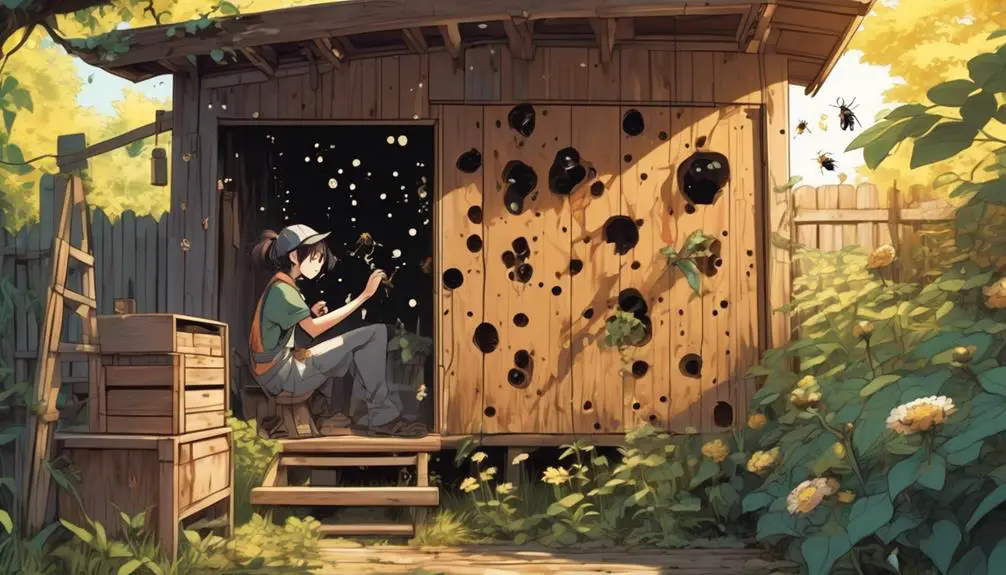
While implementing effective removal techniques can significantly reduce an immediate carpenter bee problem, it's equally important to strategize on how to prevent a future infestation in your shed.
As a starting point, you need to consider sealing the shed with a bee-proof material. This may involve using wood putty or caulk to fill in the small holes and crevices that these insects love to use for nesting.
Next, consider applying a preventative pesticide. Look for a product labeled as an insecticide for carpenter bees. Apply this treatment to the shed's surfaces where they're known to drill, such as unpainted or weathered softwoods.
Another effective strategy is to paint or stain the wood of your shed. Carpenter bees are less likely to bore into painted or stained wood compared to untreated wood. The use of oil-based or polyurethane paints can further deter these bees.
Lastly, consider installing a carpenter bee trap. These traps mimic the bees' natural nesting sites, attracting them into a one-way chamber from which they can't escape. Regularly check and empty these traps to keep them effective.
Preventing future infestations requires ongoing vigilance, but these steps give you a solid foundation on which to build your strategy.
Conclusion
In sum, you've now grasped the nature of carpenter bees, their telltale signs, and the damage they inflict on your shed.
You've also explored effective removal techniques and preventative measures to ward off future infestations.
Remember, your vigilance and prompt action are key in maintaining a carpenter bee-free shed.
Keep this knowledge at the forefront, and you'll be well-equipped to handle these wood-boring pests.

